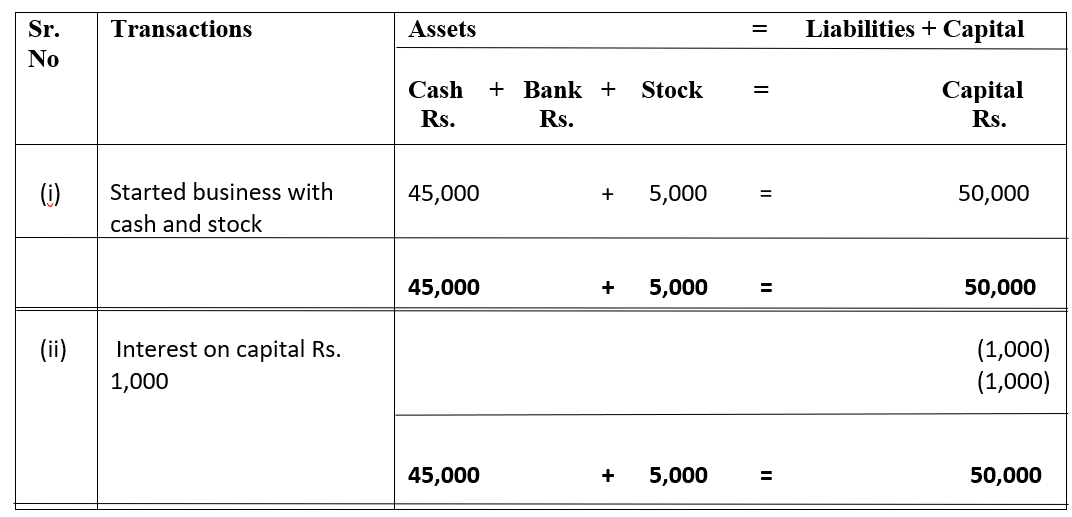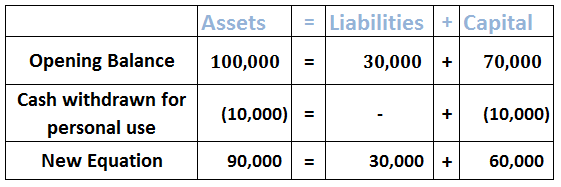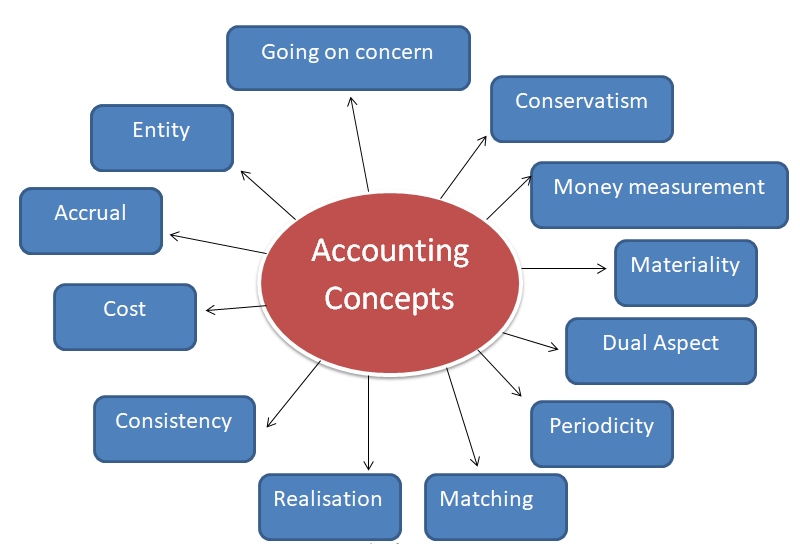The accounting equation represents the relationship between assets, capital, and liabilities of a business. It follows the concept of the double-entry bookkeeping system where every debit has an equal credit. The rules state that at any time a business’ assets should equal liabilities. This is alsoRead more
The accounting equation represents the relationship between assets, capital, and liabilities of a business. It follows the concept of the double-entry bookkeeping system where every debit has an equal credit. The rules state that at any time a business’ assets should equal liabilities. This is also known as the statement of financial position equation.
The accounting equation can be shown as follows:
Assets = Capital + Liabilities
For example, Liza starts a business by investing $3,000 as cash. In accounting terms, business and owner are separate and so business owes money to Liza as capital.
In this example,
Capital invested = $3,000
Cash (Asset) = $3,000
If Liza puts this into the accounting equation, it will be shown as:
| Assets = | Capital + Liabilities |
| $3,000 (Cash) = | $3,000 + Liabilities |
Further, Liza purchases a market stall from Ben and the cost of the stall was $1,800. She purchases flowers from the wholesale market at a cost of $700. Now she is left with $500 cash out of the original $3,000.
The state of her business has now changed and can be shown as follows:
| Assets = | Capital + Liabilities |
| Stall $1,800 | $3,000 + Liabilities |
| Flowers $700 | |
| Cash $500 | |
| $3,000 | $3,000 |






Meaning Capital assets mean the assets which are used in the business operations to generate revenue. The benefit from these assets is expected to flow to the enterprise beyond the time span of one year. Capital assets are commonly called fixed assets. Examples of capital assets are plant, machineryRead more
Meaning
Capital assets mean the assets which are used in the business operations to generate revenue. The benefit from these assets is expected to flow to the enterprise beyond the time span of one year. Capital assets are commonly called fixed assets.
Examples of capital assets are plant, machinery, land, building, vehicles etc.
To expense the capital assets for the economic benefits they provide, they are depreciated over their useful life on some equitable basis.
When capital assets are sold, the gain on sale is credited to the capital reserve account. On loss, it is simply debited to the profit and loss account. Capital assets are shown under the heading ‘Plant, Property and Equipment’ under the asset head of the balance sheet.
Assets that do not qualify as capital assets
The assets which provide economic benefits for less than a year do not qualify as capital assets. Such as inventories, accounts receivables etc. are not capital assets.
Also, those assets which are not intended to be held for more than 1 year are not capital assets even if such assets are capable of providing economic benefits for more than 1 year. Such assets will be considered current assets.
For example, if a plot of land is purchased by a business but the intention is to sell it after 2 months then such land will not be considered a capital asset.
See less